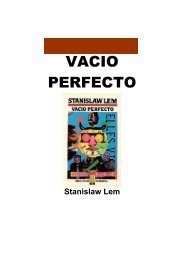cambridge-crime-fiction
cambridge-crime-fiction
cambridge-crime-fiction
You also want an ePaper? Increase the reach of your titles
YUMPU automatically turns print PDFs into web optimized ePapers that Google loves.
The thriller<br />
It downplayed the jokiness and artificiality of many mysteries, while failing<br />
to recognise that thrillers could work perfectly well on their own terms.<br />
The thriller was not necessarily as far-fetched or as illogical as these critics<br />
implied. Erskine Childers’s bestseller The Riddle of the Sands (1903), a<br />
founding text of the genre, displays a meticulous eye for detail and a high<br />
moral and political seriousness, as befits a seafaring spy novel whose major<br />
concern is with national regeneration in the face of Germany’s growing<br />
naval power. But, as the spy novelist Valentine Williams argued in one of<br />
the rare defences of the thriller, what ultimately matters in thriller-writing<br />
is ‘plausibility’ or verisimilitude, a quality that is largely genre-specific. It is<br />
not what the reader believes that counts: ‘the important aim is to make him<br />
believe it’, to carry the reader along by using pace and surprise to ‘outweigh<br />
any inherent improbabilities of plot’. 7 This maxim is as relevant to a latterday<br />
‘superthriller’ like Thomas Harris’s Black Sunday (1975), which takes us<br />
inside the technicalities of a terrorist plan to bomb the American Super Bowl<br />
by airship, as it was when Williams wrote his apologia forty years earlier.<br />
Despite his insistence that the thriller’s prime focus is upon action,<br />
Williams tended to blur the boundaries between it and the detective story<br />
in a way that would undoubtedly have troubled Sayers or purists like<br />
R. Austin Freeman. In fact, there are good reasons for this confusion. For<br />
one thing, writers were often capable of working in either genre. This was<br />
evidently true of Williams himself, and it was no less true of major figures<br />
like Edgar Wallace and, perhaps more surprisingly, Agatha Christie, some<br />
of whose early novels like The Secret Adversary (1922) orThe Seven Dials<br />
Mystery (1929) were concocted from such thrillerish ingredients as master<br />
criminals, secret societies, and special agents. The picture is further complicated<br />
by the protean nature of the thriller, which has always been capacious<br />
enough to incorporate devices from the detective story tradition. This was<br />
particularly noticeable during the Edwardian period, in the years before the<br />
classic detective novel was perfected. Thrillers as various as Edgar Wallace’s<br />
The Four Just Men (1905) and Sax Rohmer’s novel introducing his celebrated<br />
Oriental master criminal, The Insidious Fu Manchu (1913), made extensive<br />
use of the locked-room murder mystery first devised by Edgar Allan Poe, for<br />
example, but combined such baffling <strong>crime</strong>s with cliffhanger techniques.<br />
Where the thriller differs from the detective story is not in any disinclination<br />
to resort to deductive methods in solving <strong>crime</strong>s – though, to be<br />
sure, when present they necessarily occupy only a secondary role. Rather,<br />
the thriller was and still is to a large extent marked by the way in which it<br />
persistently seeks to raise the stakes of the narrative, heightening or exaggerating<br />
the experience of events by transforming them into a rising curve of<br />
danger, violence or shock. The world that the thriller attempts to realise is<br />
137



